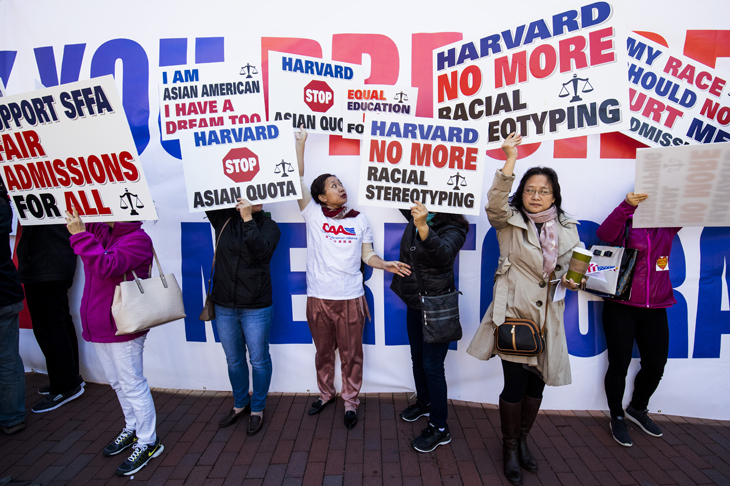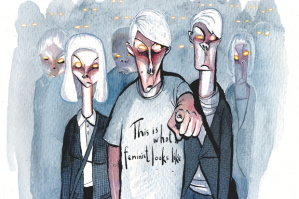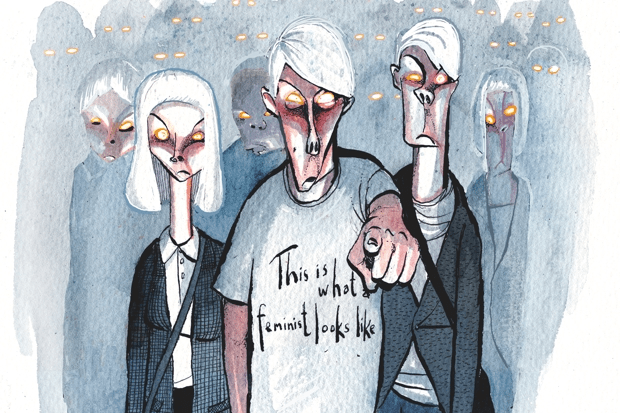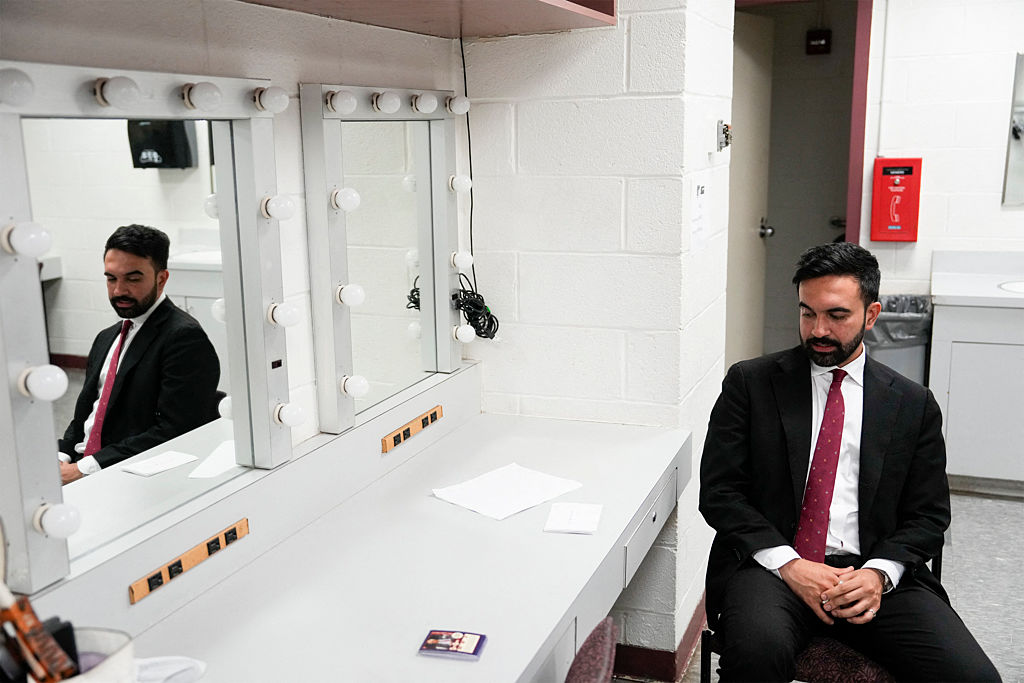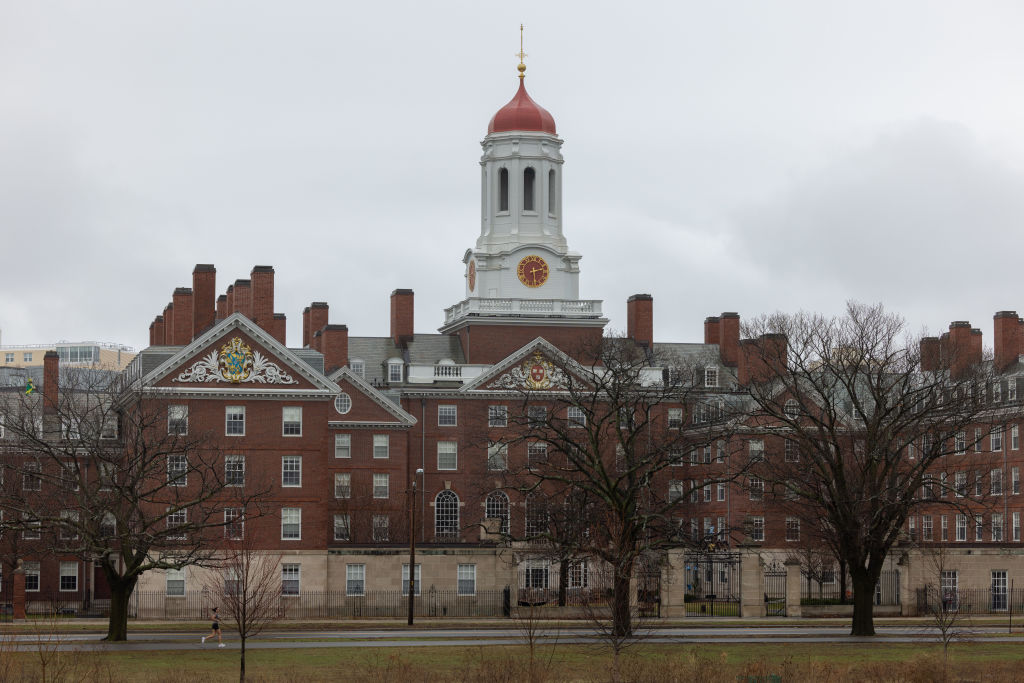There comes a point in a New York expat’s life when you suddenly realize that the liberal elites that run this town have feet of clay. You have watched them joining anti-Trump marches, opening their beautiful homes for Democrat fundraising parties and noisily bidding ludicrous sums at charity auctions. Then the time comes for their children to apply to university and the whole elaborate façade comes crashing down.
My wife and I couldn’t help noticing that the parents of our daughter’s American friends didn’t exactly share our blind panic as we tried to work out where she should apply for university.
Why were people who usually couldn’t shut up for worrying about their children’s schooling suddenly so much more blasé about the future than we were? Their children were bright, but not that bright. The universities in their sights were among the best in the country: Harvard, Princeton, Yale and the rest of the Ivy League.
What these teenagers did have and our daughter didn’t, however, were parents who had been there, too. More often than not, their parents had even met there. Their success therefore was not quite guaranteed but vastly more likely than for us poor British saps and, more importantly, for the vast majority of their fellow Americans.
It’s shocking enough to learn that proudly meritocratic America is about the only country whose universities give precedence to its richest, most entitled applicants. It’s doubly dispiriting to learn that liberal colleges, parents and, frankly, children collude without so much as a blush at this outrageous exercise in hypocrisy and inherited privilege.
The dark mysteries of the grandiosely titled ‘legacy preference’ system have just been laid bare in a Boston courtroom. The case concerns Students for Fair Admissions, an anti-affirmative action campaign group that is suing Harvard University on the grounds that it discriminates against Asian-Americans.
The court has heard all the evidence and now awaits a judge’s ruling. It was told that Harvard’s admissions Gauleiters give low ‘personality ratings’ for criteria such as courage, likability and kindness to Asian applicants — often without even meeting them. The university insists it doesn’t discriminate against any racial groups.
However, these allegations pale beside what the case has revealed about how Harvard falls over itself to ensure rich parents and alumni parents — preferably both (and in elite Harvard’s case, they usually are) — get their children accepted. Far from being a Harvard quirk, the legacy system operates at three-quarters of America’s top 100 universities, including all but one of the very smartest ones (the exception being Massachusetts Institute of Technology).
Writing about the Harvard case, the New York Times columnist Nicholas Kristof recently described legacy preferences as progressive America’s ‘dirty little secret’. It’s certainly dirty but hardly much of a secret, given that nobody involved feels they have anything to hide. By clinging to the notion that the US is a meritocracy, richer Americans can always argue that whatever their rewards, they got them on their own talent.
What was missing, until now, was a detailed explanation of how it works in practice. Thankfully, the Harvard court case and a cache of staff emails obtained by the plaintiffs have been very helpful. Welcome to the world of ‘ALDCs’, or athletes, legacies, dean’s or director’s interest list and children of Harvard staff. The dean’s or director’s interest list is largely composed of the children of very prominent people and wealthy donors. One imagines Malia Obama — whose parents are such doughty champions of equal opportunity — was on the dean’s interest list when she got into Harvard. It’s hard to think her formidable parents didn’t know that.
Thanks to what Harvard coyly calls a ‘tip’ (what the rest of us would call a ‘leg-up’), legacy applicants are five times as likely to be admitted as non-legacies. The gap between ALDCs and the rest is even larger — they are 10 times more likely to win a place.
A study last year found almost the same number of Harvard students came from the top 1 percent of America’s richest families as from the bottom 60 percent. Meanwhile, the US’s most famous and smuggest university likes to boast about its exclusivity, annually selecting just 1,660 from 40,000 applicants.
If Harvard officials weren’t squirming to hear their emails to each other on this subject read out in court, they should have been. In one, dated June 2013 and headed ‘My hero’, the then dean of Harvard’s Kennedy School of Government, David Ellwood, lavished praise on William Fitzsimmons, Harvard’s dean of admissions. ‘Once again you have done wonders,’ he gushed. ‘I am simply thrilled about all the folks you were able to admit.’
Syrian refugees fleeing Raqqa? Not exactly. He was talking about the children of super-rich donors. One donor ‘has already committed to a building’, he went on; another gave ‘major money for fellowships — before a decision from you!’ Billionaires will dole out millions to Harvard without even knowing if their child will definitely get a place.
In other emails, the dean of a Harvard graduate school praised the admissions chief for accepting certain students who were ‘all big wins’. Some went into detail about applicants’ social connections with the rich and famous. Donor names were redacted in court to spare billionaire blushes.
One chain of emails revealed quite how calculating Harvard can be in these sensitive matters. Offering Fitzsimmons advice on a potential student whose family had given $8.7 million, a Harvard fundraising official said the family had been generous in the past, but that more recent years had been ‘challenging’.
The officer added bleakly: ‘Going forward, I don’t see a significant opportunity for further major gifts. [Name redacted] had an art collection which conceivably could come our way. More probably it will go to the [name redacted] museum.’
Universities claim the legacy system merely helps determine the choice between equally able candidates. However, the trial was shown a chart that, in the words of Judge Allison Burroughs, demonstrated that a ‘big chunk of athletes and legacies’ wouldn’t have got in without a ‘tip’.
Harvard’s Fitzsimmons justified favoring rich students for financial reasons, specifically mentioning the cost of awarding scholarships. Yet that cost would barely make a dent in the annual returns of the university’s staggering $40 billion endowment. Universities also argue legacy preferences are important to keep alumni loyal and generous, but research has found that the system makes negligible difference on its own as to whether old boys and girls donate.
If legacy preference only helped in getting a good education, that would be reason enough to object. However, graduating from a top US university is often just the beginning of a lifetime’s relentless networking. The average Ivy League alumni association would give the Freemasons a run for their money when it comes to mutual back-scratching. Martha Pollack, president of Cornell, recently told her university newspaper that legacy admissions help perpetuate ‘a Cornell family that goes on for generations’. She saw this as a virtue, not a fault.
Critics note that the proportion of legacy students in US university admissions remains pretty constant each year, suggesting an informal quota system is operating. Legacy undergraduates remain disproportionately white as well as rich.
Americans love to see Oxford and Cambridge as quaint bastions of privilege but UK universities abolished legacy preferences in the middle of the last century. Our daughter got into Cambridge and some New York friends were genuinely shocked to learn we’d advised her it was probably a bad idea to mention that her mother is an alumna at her interview.
Meanwhile, Downton Abbey: The Exhibition continues to pack in the punters on its epic US tour. Americans are coming in droves to shiver with pleasure at the iniquities of feudal old Europe and its self–perpetuating ruling class. But if they really want a good dollop of hereditary privilege to gasp at, they could look much closer to home.
This article was originally published in The Spectator magazine.



